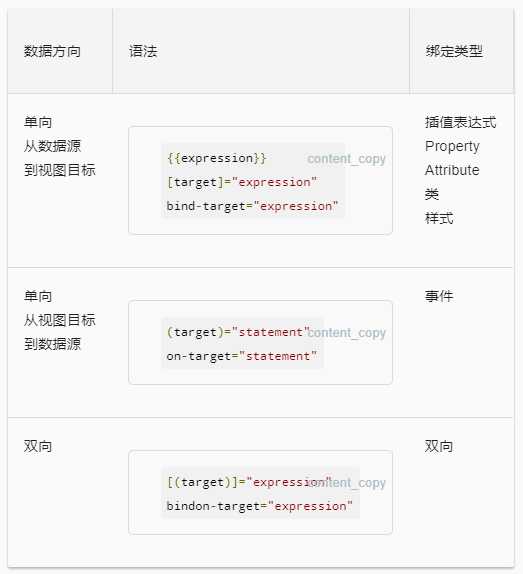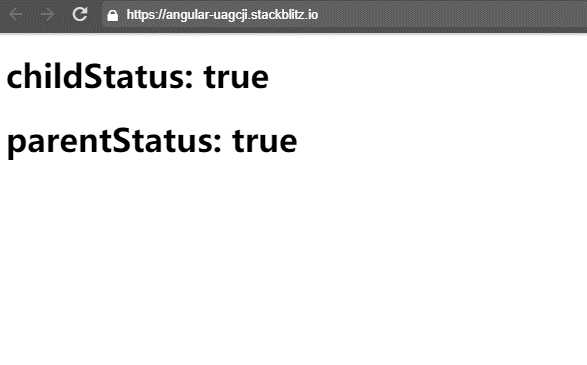标签:ges 数据 双向 9.png blog new core timeout pre
学过Angular的同学都知道,输入框通过[(ngModel)]实现双向数据绑定,那么自定义组件能不能实现双向数据绑定呢?答案是肯定的。
Angular中,我们常常需要通过方括号[]和圆括号()实现组件间的交互:

那么在[]和()的基础上,如何实现组件的双向数据绑定?
例子如下。
子组件:
<!--testDataBinding.component.html-->
<h1>childStatus: {{childStatus}}</h1>//testDataBinding.component.ts
export class TestDataBindingComponent implements OnInit{
@Input() childStatus;
@Output() childStatusChange = new EventEmitter();
ngOnInit(){
setTimeout(()=>{
this.childStatus = false;
this.childStatusChange.emit(this.childStatus);
},5000);
}
}注意这里的写法,这是关键所在,输出属性前半部分必须与输入属性相同,输入属性可以随意取名,输出属性需在输入属性基础上加上Change,比如你的输入属性是myData,那么输出属性就必须是myDataChange。
父组件:
<!--app.component.html-->
<test-binding [(childStatus)]="parentStatus"></test-binding>
<h1>parentStatus: {{parentStatus}}</h1>//app.component.ts
import { Component,OnInit } from ‘@angular/core‘;
@Component({
selector: ‘my-app‘,
templateUrl: ‘./app.component.html‘,
styleUrls: [‘./app.component.css‘]
})
export class AppComponent implements OnInit{
parentStatus: boolean = true;
ngOnInit(){
setTimeout(()=>{
this.parentStatus = true;
},10000);
}
}
在父组件我们初始化parentStatus为true,并把它传到子组件TestDataBindingComponent。
在子组件里,5秒后我们把childStatus设为false,看它能不能传到父组件。再过5秒,我们在父组件将parentStatus设为true,看它能不能传到子组件。

事实证明,子组件值变化后,父组件的值也跟着变化;父组件值变化后子组件的值也跟着变了!
我们实现了双向绑定!
查看本文代码和效果,可点击这里。
标签:ges 数据 双向 9.png blog new core timeout pre
原文地址:http://www.cnblogs.com/cme-kai/p/8012159.html